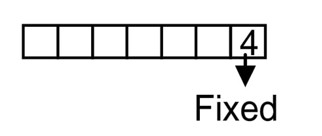Probability
Get insights from 66 questions on Probability, answered by students, alumni, and experts. You may also ask and answer any question you like about Probability
Follow Ask QuestionQuestions
Discussions
Active Users
Followers
New answer posted
2 weeks agoContributor-Level 8
GIBS Business School, Bangalore, provides a structure for dual specialisation in its PGDM and MBA-equivalent programs. This flexibility further enables students to combine core management and emerging business domains. Their first options include Marketing Management, Human Resource Management, and Finance Management. Further, the second specialisation can be done in Operations & Supply Chain Management, International Business, Artificial Intelligence & Business Analytics, Digital Marketing, or Marketing. Typically, students select two specializations during the programme and are free to do so based on their career goals and interests
New answer posted
2 weeks agoContributor-Level 8
GIBS Business School, Bangalore, has a strong and dynamic Placement Cell that helps in securing excellent career opportunities for the students. Every year, more than 260 reputed companies have visited the campus for recruitment, offering versatile jobs in sectors like BFSI, IT, consulting, manufacturing, and FMCG. The highest package offered has reached ₹16.15 LPA, with an average package of around ₹7.8 LPA. Some of the top recruiting companies include Northern Trust, L&T Technology Services, Bajaj Finserv, Apollo Tyres, Mercedes-Benz, HDFC Bank, and Wipro. Besides placement, GIBS focuses on employability skills through its Finish
New answer posted
2 months agoContributor-Level 10
3, 4, 5, 5
In remaining six places you have to arrange
3, 4, 5,5
So no. of ways
Total no. of seven digits nos. =
Hence Req. prob.

New answer posted
2 months agoContributor-Level 10
f (x) = x? – 4x + 1 = 0
f' (x) = 4x³ – 4
= 4 (x–1) (x²+1+x)
=> Two solution
New question posted
2 months agoNew answer posted
3 months agoContributor-Level 10
Let z be equal to (x + iy)
(x + iy) + (x – iy) = (x + iy)2 (i + 1)
Equating the real & in eg part.
(i) & (ii)
4xy = -2x Þ x = 0 or y =
(for x = 0, y = 0)
For y =
x2
x =
=
of
=
New answer posted
4 months agoContributor-Level 10
Each element of ordered pair (i, j) is either present in A or in B.
So, A + B = Sum of all elements of all ordered pairs {i, j} for and
= 20 (1 + 2 + 3 + … + 10) = 1100
Taking an Exam? Selecting a College?
Get authentic answers from experts, students and alumni that you won't find anywhere else
Sign Up on ShikshaOn Shiksha, get access to
- 65k Colleges
- 1.2k Exams
- 679k Reviews
- 1800k Answers
